Continue your photo travel tour with Joan Ubide, while he’s on his photographic discovery of China.
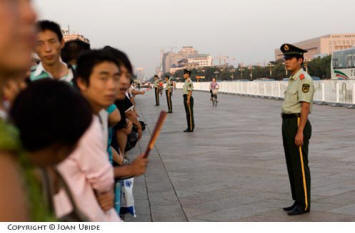
1/320 F2.8, ISO 125, 50mm
Beijing, Tiananmen Square – flag ceremony
Writing about a great country like China using only a few lines is impossible. Instead, I’ll share a few details about the Chinese people, because they’re–without a doubt–the best I’ve seen. They have peculiar habits that we Westerners consider shocking, amusing, and even disgusting–like squatting anywhere on the street, being totally disrespectful when queuing, going for a walk at seven in the evening in their pajamas, wearing t-shirts rolled above their bellies to tolerate the heat, and making loud noises when they’re eating (of course, their noodles are hot and spicy!). We were also alarmed by their spectacular, big spits. When we first arrived in China, every time we heard a local person expectorate behind us, we were afraid the spit would land on us. Luckily, the Chinese are sharpshooters.
Apart from all their “curiosities,” however, the Chinese people are delightful. During the two months I stayed in their country, I received only true smiles and bows (a ritual and respectful greeting) whenever I encountered someone. They’re very nice and sincerely admirable.
I witnessed three completely different Chinas: the modern one, the underground and the rural. The modern China, with its impressive infrastructures, is all about impressive new buildings and construction. Obviously, I have to highlight Beijing, the capital city and location of the next Olympic Games. I find it illogical that the Olympics will take place in this country, a place where some human rights are not observed and censure is common. However, China seems to be improving. It has become more modern and is more open to the world. Even its negative aspects are improving. I could see that through the young people. I’m sure the next Olympics will be packed with great events that help the country progress, just as they did in my country (Barcelona, 1992).
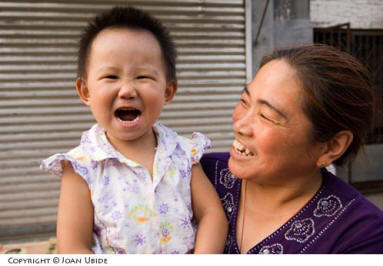
1/160 F4, ISO 100, 22mm
Beijing, inside the Hutongs with friendly people
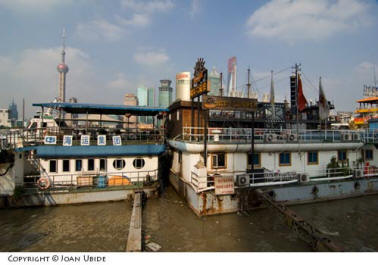
1/160 F10, ISO 100, 12mm
Shanghai, from the Bund looking
at the Huangpu river – end of Pudong area
“Underground” China is what you find when you enter a bystreet. It’s an amazing location for photography, the most fascinating side of travel, especially for me as I’m a fan of urban photography. Here people sit in the streets, making a living selling cheap imitations and excellent food. We ate there everyday for only one or two dollars. If you visit China, don’t hesitate to buy food from the street stalls. You run the same risk of indigestion if you eat in a restaurant. If you’re the sybaritic type, you’re in luck; a feast in a good restaurant is only 20 to 30 dollars.
Rural China is unique with its fascinating landscapes. The scenery is difficult to describe with words and sometimes even with pictures. You have to discover it without hurrying, by riding a bike with your camera and feeling how your face slips into a smile of satisfaction (at least that was the feeling I had). The country is like a fairy tale, and your mind can’t stop working if you hope to soak up every detail.
China is a perfect place to mix with the locals, so the best way of moving around is by bike. The bigger cities have bike lanes, and in the smaller cities, you only have to follow the herd. In the small cities, you have to know the official traffic rules, though: trucks go first, then buses, then motorbikes, and finally, bicycles. Pedestrians have the worst priority level. They have to literally weave through traffic. Be very careful; they don’t brake. Of course, they sound the horn every time to let you know they’re coming closer.
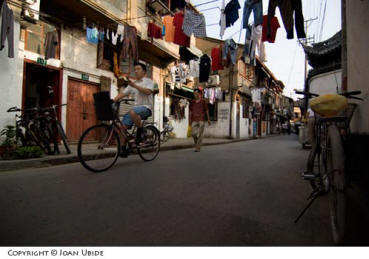
1/320 F4, ISO 100, 12mm
Shanghai, inside the Old Town, near Yu garden area
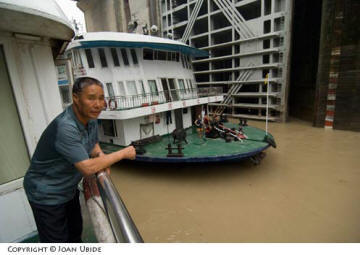
1/250 F4.5, ISO 125, 12mm
Yangtze River, three gorges “elevator”
A Few travel Tips:
You can move around most of China by train, although local flights are very cheap (around $50 to $100 US). Chinese trains are good, and those connecting cities like Beijing and Shanghai are modern and very fast. If you visit the country, you may like to know that there are three classes of tickets: The “seat” is only a seat, inadvisable for long trips (more than 15 hours or night trips). They’re very cheap, though. (We paid $8 US for a sixteen-hour trip). Second class is called “hard sleep” and consists of compartments without doors, each with six rather hard beds. Second class isn’t a bad option, because you can meet people. If someone in the coach speaks English, he’ll appear in ten minutes or less to talk to you. Finally, you have the option of “soft sleep,” four-bedded private compartments (20-hour trip; $45 US).
In big cities, you may find someone who speaks English. In small towns, forget about it, although the people will do anything they can to help you. It’s advisable to bring along a map in Chinese if you have to buy train tickets. Take into account that Chinese cities have very similar names, and you may not know how to pronounce them properly (consider the similarities between “Boston” and “Houston”). However, the best option for buying tickets is to have the people of the place where you slept the previous night write down the name of your next destination in Chinese, so that you have only to show the piece of paper when buying your ticket. Note: the first week of October is a national holiday, and moving around then is not easy.
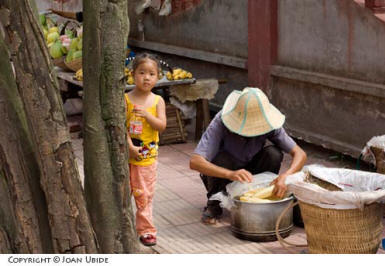
1/100 F7.1, ISO 100, 50mm
Walking around the Whanzou Village
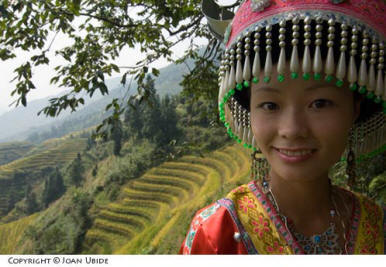
1/90 F11, ISO 100, 18mm
Local people in Guangxi region – rice terraces
The route I followed:
Coming from the capital of Mongolia, I started my Chinese route in Beijing. (I recommend staying in the Leo Hostel which is just five minutes walk from Tiananmen Square). From Beijing, we took several trains to Shanghai, Xi’an, and, finally, Yichang, where we took a ship for four days to travel the Yangtze River to Chongking. We chose a totally Chinese ship, so we paid only $80 US, and we were the only ones with round eyes, an excellent experience! (There are other fine tourist cruises available, but they cost about $350 US.) From Chongking, we headed to Guilin by train and then took another ship for five hours to Yangshuo (a spectacular journey that I recommend highly). It’s a good idea to travel in popular ships ($25 to $30 US; meal included–not bad). If you spend a few days in Yangshuo, it’s a perfect spot for exploring the spectacular mountains and rural life style by bike.
After enjoying nature in Yangshuo, we took a bus to Guilin ($20 US) and a train to Kunming. Kunming is an interesting city in which I recommend The Hump Hostel (www.thehumphostel.com; bed from $3 US) that lies in a good location and offers excellent traveler atmosphere. From Kunming, we took a train to Dali (old Dali, very recommendable) and yet another train to Lijiang, an amazing city for photography. Next, we headed north by bus to Chengdu, where you can catch a train to Lhasa, the capital of Tibet. However, before you reach Lhasa, you have to stop in the Tiger Leaping Gorge for few trek days and then continue to Shangri-La, where you can enjoy fascinating places that can’t be reached by train.
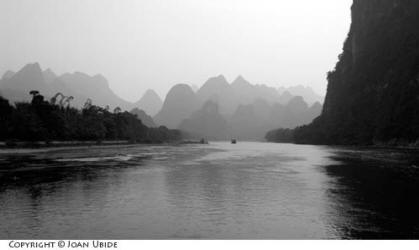
1/400 F10, ISO 100, 24mm
On board, going to Yangshuo
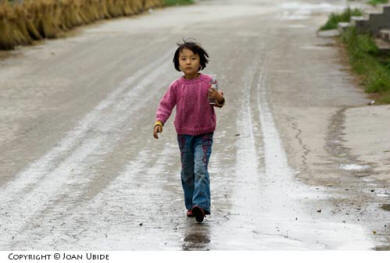
1/320 F5, ISO 160, 135mm
Walking alone in a rural area near Old Dali
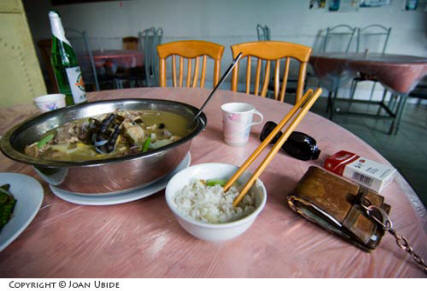
1/15 F4, ISO 200, 12mm
Lunch time in Old Dali
Right now, I’m in Shangri-la, and I don’t know if I’ll enter Tibet via Chengdu or by bus through the Tibetan Mountains, because the weather has worsened. It’s been raining for a week. In the meantime, that’s all for China. If you want to know more about this experience, in a few weeks I’ll be at Apogee Photo with images of Tibet and its temples. (Don’t worry; I don’t think I’ll shave my head and exchange my brand new camera for eternity in a lost temple like Brad Pitt did in his movie. I like my backpack, my new life style, and my Angelina has not arrived yet.)
Cheers and GoodPictures!
Joan Ubide
To see more photos on Joan’s trek through China visit…
www.joanubide.com
Visit Part 1: Mongolia
Visit Part 3: Tibet
Visit Part 4: Nepal
Visit Part 5: North India
Visit Part 6: South India
Visit Part 7: Iran
Check in next month to see Joan’s trip to Tibet!
by Joan Ubide

Leave a Reply